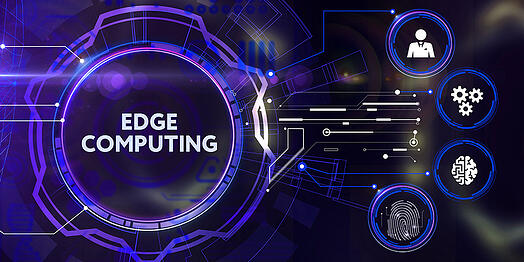The leading edge in IoT
Read how IoT edge solutions can help your company provide connected, relevant, value-added services for customers, while streamlining your operations.

Your company is under continuous pressure to gain an edge over the competition by delivering differentiating experiences and processes to customers.
But the word “edge” means different “things” to different people. The edge I’m talking about here is Internet of Things (IoT) solutions on the edge. These solutions can help your company to provide connected, relevant, value-added services for customers, while streamlining your operations to keep costs to a minimum.
What does the IoT edge really deliver?
You would get a different answer to that question depending on who you speak to and which industry they work in. Fundamentally, an edge device collects data and makes decisions locally on how to respond to that data. There are many benefits to responding the immediate vicinity to the sensors and actuators being controlled, as opposed to sending all the data back to the cloud and the decisions being made there.
Manufacturing: In IIoT manufacturing, edge computing generally applies to processing data on the factory-floor, either on gateway devices (like industrial PCs) or on the machinery itself. It is commonly used where data from sensors needs to be analyzed at lightning speed, to adjust behavior in real time. For example, significant savings can be achieved if sensors pick up a manufacturing fault or variance that can be addressed right away, rather than a product being rejected much later in the process during quality checks. Similarly, unscheduled stoppages can be avoided by monitoring equipment performance to schedule maintenance before a predicted part failure.
Telco: Looking at telecommunications businesses, providers have traditionally focused on selling fixed and mobile connectivity solutions. However, over the past decade, that business has become highly competitive. So, to generate value from their continued investment in new technologies such as 5G, telcos need to leverage these traditional connectivity services through new business models.
And beyond: And that is where the edge plays another important role. Existing telecommunications industry infrastructure can support a broad range of new edge-based use cases in various verticals, such as manufacturing (remote asset monitoring), logistics (connected vehicles), smart cities (infrastructure management), and utilities (meters and supply monitoring). Positioning themselves as connectivity service providers (CSPs), telcos have the technical backbone on which to build and operate these solutions, benefiting also from strong brand recognition, existing business relationships, and a position of trust with their customers.
It doesn’t matter whether it’s an industrial PC in a factory, a crash avoidance system in a car, an operations management system on a remote wind farm, or distributed processing implemented across a mobile network. The capabilities needed by all these edge solutions are the same: Connecting to devices, capturing and managing the data from those devices (locally and optionally synchronizing to the cloud), and applying analytics locally in real time to validate, aggregate, and generate insights.
The final piece which delivers the real value is being able to exploit those insights as they happen, or even before events happen, whether triggering actions locally at the edge, or beyond.
IoT edge computing
Everyone is talking about edge, edge devices and edge computing. But edge represents a wide spectrum of different architectures and use cases depending on which industries you look at, each with its own specific requirements and challenges.
Yet, circling back to the key business outcomes, in all cases, edge-enabled solutions utilize common capabilities to offer businesses opportunities to save costs, innovate, differentiate, and delight customers – and they can thereby retain their unique “edge” in an increasingly competitive landscape.
Getting an edge
To get your own “edge” my advice is to look for open solutions that use unified tooling and experience regardless of where you’re deploying it. This is important because if your edge solution operates different toolsets at the edge than it does in the cloud it can increase the difficulty of managing remote devices. This means that analytics need to be redeveloped and tested before deployment at the edge.
Cumulocity IoT’s solutions at the edge provide the openness, security, connectivity and innovation you need to compete.
Click below to find out more about Cumulocity IoT’s solutions at the edge.